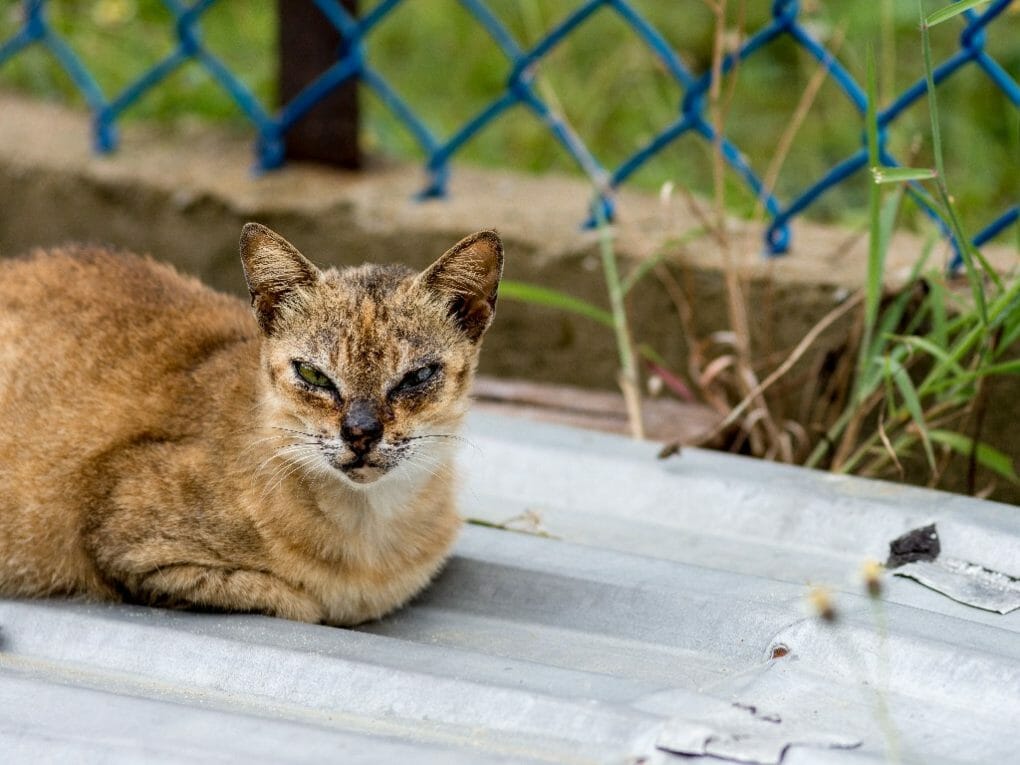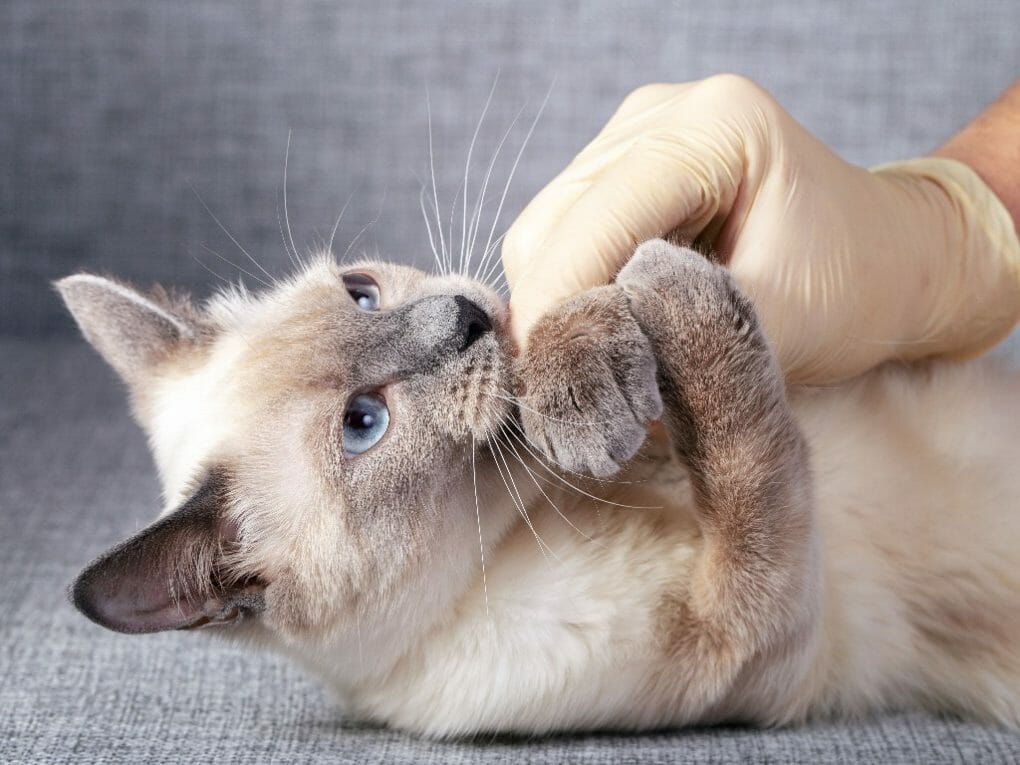Why Are Cats So Mean: Possible Reasons for Cats’ Aggression


Cats fear aggression, which is exhibited when they feel threatened or unsafe. It is usually a result of one or more of the following: fear aggression, inter-male aggression, or territorial aggression that they may redirect to humans. This fear of attack can manifest differently, depending on the cat’s personality.
Table of Contents
Fear Aggression
Cats are known for their feline friendliness, but this doesn’t mean they’re always lovely. Cats can be pretty aggressive when they’re fearful or threatened. Training your cat to behave around new people or animals is essential. This can be done through positive reinforcement – rewarding your cat when they act politely.
If it does happen that your cat becomes aggressive, there are some simple steps you can take to reduce the severity of the situation. For example, they hiss and swat at the stimulus, which may inhibit them from reacting more aggressively. Additionally, ensure you’re aware of your cat’s body language to understand better what’s happening.
Underlying Causes
There are various underlying causes of cat fear aggression. While some cats may react to new people or pets aggressively, others may do so due to changes in their environment, such as moving house or renovating.
Moreover, certain things that trigger fear aggression in cats can vary from one cat to the next – this means that there is no one-size-fits-all approach to managing and reducing this behavior.
Cats have undergone many evolutionary changes, including developing solid instincts for self-preservation and territoriality. As a result, they may become fearful if they feel threatened or unsafe. Thankfully, behavioral modification techniques help reduce the cat’s fear of aggression toward people and other animals.
Treatment
In such cases, training can help reduce the cat’s fear. If the aggression is severe or continues despite treatment, it might be time to seek veterinary help. Various techniques to make your cat feel safe include playtime, petting, and feeding treats. While these techniques won’t always work immediately, over time, they will likely increase your cat’s tolerance for you and improve their behavior.
Inter-male Aggression
When it comes to cats, you’re probably wondering why they’re so mean. Well, it’s all down to their behavior called inter-male aggression. This behavior is usually aimed at controlling resources, such as food and territory. Cats are territorial and will fight for dominance over other cats in the area.
Often, claws and teeth come into play, making it pretty brutal. If you notice your cat fighting more than usual, there may be a reason behind it! You can address the issue head-on if you can identify what’s triggering the aggression. This may involve providing the cat with its designated territory, separating the cats, or training them with positive reinforcement.
Underlying Causes


It can be challenging to determine the root cause of aggression in cats, and it might require professional help. For example, it could be due to territorial issues, food competition, or dominance over another cat. If you see your cat behaving aggressively towards another cat, it is essential to consult a veterinarian as soon as possible.
Treatment
Treatment usually involves removing the cat from the situation and providing positive reinforcement for good behavior in the future. This will help re-establish healthy boundaries between them and other cats while avoiding further conflicts.
Play Aggression
Cats are known for their feline friendliness, but that doesn’t mean they can’t get aggressive sometimes. Cats play aggression for several reasons, including establishing rankings in the household and asserting dominance over other cats. If you see your cat engaging in aggressive behavior, it’s essential to take action immediately. Never leave them unsupervised, as this could lead to severe consequences.
The best way to prevent your cat from playing aggression is by providing enough stimulation and variety in their lifestyle. Kittens learn how to play aggressively from their mothers during the birth-to-weaning period, so be sure not to punish them too harshly!
Underlying Causes
Playing with cats can be enjoyable for both parties. Still, it is essential to remember that cats are predatory animals, and their natural hunting instincts can get the better. When playing becomes too rough, injuries may occur.
Play fighting between cats is a way for them to practice hunting and killing prey. As such, it’s essential to provide your cat with toys that simulate actual games rather than human-like objects or people, which could result in injury or even death.
Treatment
Playing aggressively with them can help them learn how to behave better in the future. If they seem tense or aggressive while playing, it is best to refrain from continuing, as this could lead to problems.
Cats naturally exhibit aggression to assert dominance over other cats or people. If you find your cat behaving aggressively towards other animals or people – even if it’s only accidental – it may be time for a vet visit as there may be underlying issues that need addressing.
Redirected Aggression
According to the ASPCA, redirected aggression is “a form of aggressive behavior in which a pet physically or emotionally reacts to something touching or entering their space, instead of attacking the person or object that originally provoked them.”
This aggression can lead to problems like house/cat fighting and scratching furniture. To prevent these conflicts, provide your cat with adequate shelter and resources. This includes providing your cat with a place to retreat when feeling threatened or insecure and plenty of toys and playtime.
Underlying Causes
When cats react defensively by hissing, spitting, and attacking other animals or people, it can be pretty alarming. In most cases, the cat is simply responding to a trigger – something that sets them off – and it’s essential to identify what that might be. There are many ways to help your cat get along with others – some of which may require training.
For example, if your cat feels threatened by another animal in the house, you can try keeping both cats separate for a while until they learn to tolerate each other. Once you know why your cat is reacting this way (and has tried various solutions), it will be easier to deal with the situation calmly and effectively.
Treatment
The best way to deal with redirected aggression is usually through training that focuses on correcting undesirable behaviors in a positive environment. Various medications also help cats feel more at ease when confronted with strangers or new objects/sounds outside their home territory.
Keeping your cat entertained and happy will help prevent them from turning towards aggressiveness in situations like these – something you should always avoid!
Territorial Aggression
When cats feel threatened, they will often act out physically. This behavior, known as territorial aggression, can be destructive – both to the property of the aggrieved cat and to any nearby objects or animals that cross its path. For example, if you’re noticing a lot of aggressive behavior from your cat, it might signal that they feel threatened and territorial. Here are four reasons why cats might act out in this way:
Underlying Causes
There are several underlying causes for territorial aggression in cats, and understanding them is key to stopping the behavior. Some reasons may be dietary or nutritional – such as when one cat’s food supply is disrupted. Others might be due to changes in the environment, such as new people moving into the home or changes at work causing stress.
It’s also important not to get caught up in a cat’s aggressive behavior and instead remain calm and understand their needs. This will help build a strong relationship between the cat and the owner, where all parties can coexist peacefully.
Treatment


Start by rewarding your feline friend for good behavior and work your way down as the aggression subsides. If you find that your cat is becoming aggressive outside of its home – this could mean rehoming or putting it to sleep – then you will need to treat territorial aggression with positive reinforcement, like food or toys. Cats can become territorial when they feel threatened and may lash out in response.
